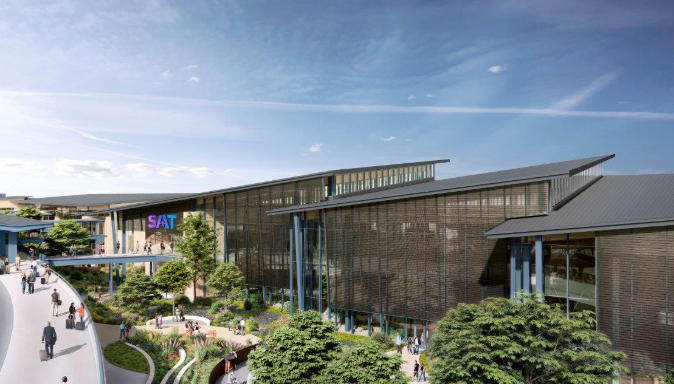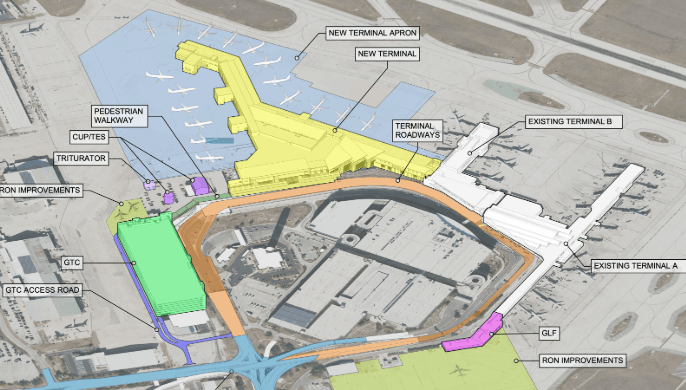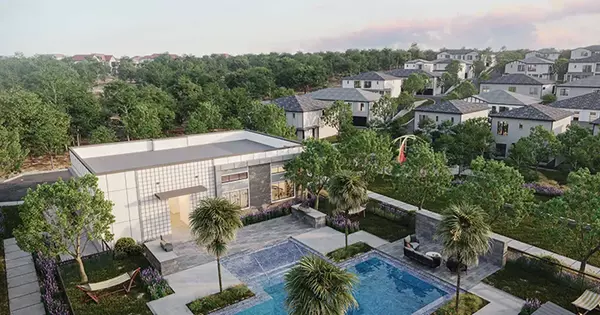Major Airport Expansion San Antonio

San Antonio is preparing for takeoff—literally.
A massive expansion is underway at San Antonio International Airport (SAT), marking one of the city’s most ambitious infrastructure projects in years. With a brand-new terminal, upgraded amenities, and long-term capacity improvements, this project is set to transform the way residents, businesses, and visitors experience air travel in and out of the Alamo City.
The expansion reflects San Antonio’s rapid population growth, rising tourism, and position as a major player in Texas’ economic future.
🏗️ What’s Included in the Airport Expansion?
The expansion includes a completely new terminal building—slated to be the largest ever built in the city—alongside key improvements to accommodate higher passenger volumes and more flights.
Key Features:
-
A brand-new 850,000-square-foot terminal
-
17 additional gates to increase capacity
-
Expanded TSA screening areas
-
New shops, dining options, and traveler lounges
-
Enhanced baggage claim and ticketing systems
-
Improved international travel facilities
Construction is expected to begin in the coming months with completion projected by 2028.
🌆 Why This Expansion Matters for San Antonio
With more than 10 million passengers annually, SAT has been operating at near-capacity in recent years. As San Antonio continues to grow in population and industry, modernizing its airport is essential to keeping the city competitive and connected.
This expansion aims to:
-
Improve travel efficiency for residents and business travelers
-
Attract more direct domestic and international flights
-
Support economic development and tourism
-
Strengthen San Antonio’s identity as a major Texas hub
🏡 What This Means for Real Estate & Local Growth
📈 1. Stronger Appeal for Out-of-State Buyers & Relocators
A modern airport with more direct flights makes San Antonio more attractive to:
-
Remote workers and digital nomads
-
Corporate relocations and business travelers
-
Families moving from California, the Midwest, and the Northeast
Better connectivity = higher buyer demand across many zip codes.
🏘️ 2. Boost to Airport Area & Northeast Corridor
Neighborhoods and communities surrounding the airport—like Oak Park, Alamo Heights, Windcrest, and Terrell Hills—may see:
-
Increased investment in housing, commercial centers, and short-term rentals
-
New hospitality and service industry jobs
-
Infrastructure upgrades tied to improved airport access
Expect development to expand along 281 North, Broadway, and Loop 410 corridors.
💼 3. Growth Opportunities for Investors & Developers
-
Hotels and STR properties near the airport may see higher occupancy
-
Mixed-use projects near key access points (281, Jones Maltsberger, Wetmore) may gain traction
-
More commercial space demand from logistics, tech, and travel-related businesses
As SAT becomes more traveler-friendly, so does everything around it.
🧳 How It Benefits Residents
Even for those who don’t travel frequently, the airport expansion will bring local perks:
-
Job creation (16,000+ projected jobs)
-
Improved infrastructure in surrounding areas
-
More options for shopping, dining, and entertainment
-
Civic pride in a city that’s growing smart and staying connected

🗣️ The Sky’s No Longer the Limit
San Antonio’s airport expansion isn’t just about more gates—it’s about future-proofing the city. As SAT levels up, the entire region benefits from stronger connectivity, improved infrastructure, and a more competitive edge in the Texas growth game.
Whether you’re a frequent flier, investor, or just love seeing your city evolve, this expansion is worth watching.
📬 Brought to you by CallTheCavalryGroup.com – Real estate with lift-off.
Recent Posts











